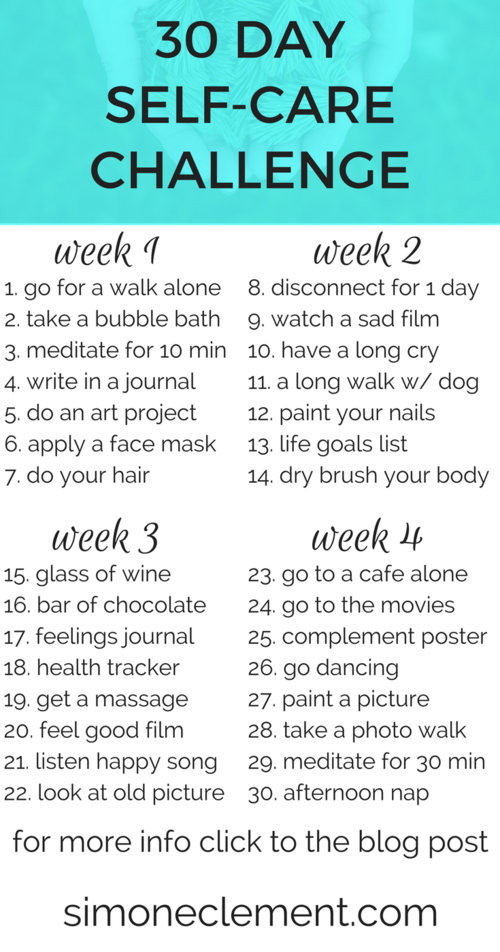Chapter 16-The Self-Care Challenge
Self-care- that is a foreign concept for some of us, including me. As educators, we tend to endlessly give of ourselves, delivering our regular program, organizing extracurricular activities such as sports and drama clubs, volunteering for union positions, volunteering within our communities and the list goes on, usually leaving very little time for ourselves. This leaves us all very tired, physically, emotionally and even spiritually drained at times. So tired in fact that we cannot even fathom getting in that workout or even that bubble bath we have been longing for.
In order to be there for our students and families, we need to be a bit selfish. If all we do is burn ourselves out with all of the little extras we are doing, we are not giving the people in our lives our best selves. Being our best selves means taking the time to care for ourselves. Making time for that work out or that bubble bath or the trip to the spa. If we are too tired to do this, then we need to cut back on something. Let go of an extra curricular activity. Give up that volunteer position. I know it is not easy, but we need time for ourselves too. I we are burnt out, we cannot help anyone!
Kristin Souers gives us four main areas in her version of the self-care challenge to take care of: health, love, competence and gratitude. On page 199, she has a chart that can help you organize your self-care. There are many different self-care challenges that can be found online too. Here are a couple that I found that might be of interest to you if the one from the book does not float your boat 🙂
(https://simoneclement.com/blog/30-day-self-care-challenge-schedule-ideas)
One that can be shared with students:

(http://schools.peelschools.org/sec/sandalwoodheights/Pages/Article.aspx?psb-art-id=38&psb-art-ltype=1)
How do you find yourself with self-care? Could you be better in this area? What do you do to care for yourself in these areas?
Challenge yourself to a 30 day self-care challenge. What are your plans/goals?

